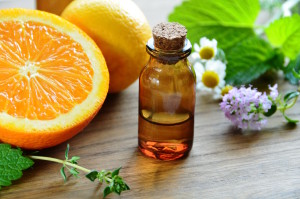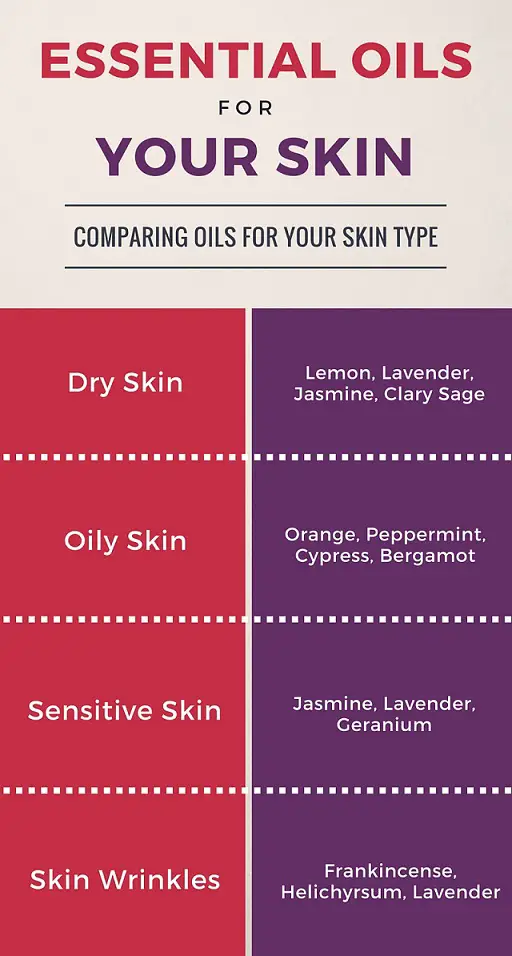There are a number of essential oils for skin recipes that can both rejuvenate and maintain your skin. But finding the right oils, or combination of oils, can be a difficult task. The challenge stems from the fact that everyone’s skin is different, and therefore may require different care.
Furthermore, using the right type of essential oil is contingent on the specific “symptoms” you are experiencing. That being said, if you find the right oil, or blend of oils, you can experience profound healing benefits for a variety of skin problems – whether it’s on your face, hands, legs, or other parts of your body.
Sure, there is no shortage of anti-aging products on the market. But most formulas are costly and may contain damaging chemicals that can negatively impact your skin over the long haul. That’s why natural skin remedies like essential oils are becoming more and more popular. After all, why sink your money into pre-manufactured “beauty products” when you can craft your own organic anti-aging oils?
First we’ll delve into which essential oils can be used for which purposes. Then, we’ll outline a few carrier oil recipes that you may also find effective.
[amazon box=”B06XRLR9RQ”]
Essential oils to use for your skin
What’s great about essential oils is not only can they help maintain healthy skin, they are 100% natural (note that some brand do contain a certain level of chemicals). High quality, pure essential oils can be balancing and potently nourishing for your skin. Whether you’re suffering from wrinkles, dry skin, oily skin, or acne, there are a variety of oils that can help.
Take note that some of these may require mixing with a carrier oil. Here is a list of various skin conditions and the recommended oils to go along with them:
- Dry skin: Clary sage, cedarwood, jasmine, lavender, or lemon
- Oily skin: Bergamot, cypress, or geranium, orange, peppermint, or patchouli
- Sensitive skin: Geranium, jasmine, or lavender
- Skin wrinkles: Lavender, clary sage, frankincense, or helichyrsum
- Elasticity: Frankincense, ylang ylang, or myrrh
- Rash, blemishes & non-cystic acne: Cedarwood, lavender, geranium, lemon, or orange
Keep in mind that everyone’s skin reacts differently. Therefore, some oils may work better for you than they may work for someone else. You can mix and match some of the oils for a more potent solution, creating your own essential oil skin recipe.
Carrier oil recipes to incorporate
As noted, not all essential oils should be applied “neat.” Meaning, some may require dilution with a carrier, such as almond, grapeseed, or coconut oil. Just be sure to check the label of the essential oil product you are using. The primary reason of using a carrier oil is to prevent potential skin irritation. If you already have sensitive skin, we recommend always diluting, rather than applying the essential oil directly.
[amazon box=”B07W3QSYS6″]
We’ve already laid forth the best essential oils to use for skin care. Now, here are a list of carrier oils you can use. These can be used on their own or combined with some of the oils referred to above.
- Acne-prone skin: Neem, jojoba, and grapeseed
- Sensitive skin: Grapeseed, apricot kernel, and avocado
- Dry & Mature skin: Olive, jojoba, rosehip seed, tamanu, and tamanu
- Damaged skin: Jojoba, tamanu, and rosehip seed
 In addition to these oils, one of the most effective, and universal, carriers is fractionated coconut oil. It carriers a virtually infinite shelf-life – in a crystal clear form. Here are just a few benefits of using fractionated coconut oil:
In addition to these oils, one of the most effective, and universal, carriers is fractionated coconut oil. It carriers a virtually infinite shelf-life – in a crystal clear form. Here are just a few benefits of using fractionated coconut oil:
- It has no color or odor, so you don’t have to worry about staining your clothes or belongings.
- It is a 100% organic solutions that does not irritant the skin (unless there is some underlying disorder).
- It smoothes out the skin without inflicting a greasy feeling.
- It can be combined with other carrier oils to increase their shelf life.
Some tips for usage and mixing
- When combining your carrier and essential oils, pour half of your carrier into a storage container, followed by the essential oils you plan on using.
- When storing in containers, leave some space at the top of the container so the oils are able to breathe.
- Be careful and gentle when combing oils. Vigorous motion, shaking, or stirring can harm the organic compounds that give essential oils their healing properties.
- Avoid exposing your recipes to excessive heat, which can change the composition of various oils and cause them to spoil more quickly.
- When handling your oils, it’s best to use either glass or ceramic tools. To be safe, it’s always best to avoid plastic.
- A little bit can go a long way when it comes to using essential oils for skin care. Depending on the quality of the brand, oftentimes all it takes is a few drops of each to create a potent blend.
- If you suffer from skin sensitivity, be careful. Perform a quick test on a small portion of your skin before applying to large parts of your body.
[amazon box=”B005IHJ556″]





Interested in natural recipes using essential oils for making facial serums and creams especially for wrinkles and tightening skin and pores and so many different things I am getting very confused and looking for information about using them and which ones are the safest and the best for your skin.